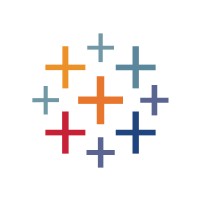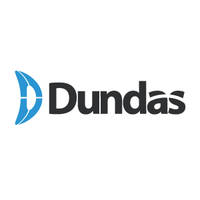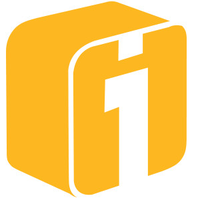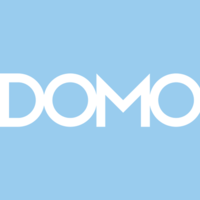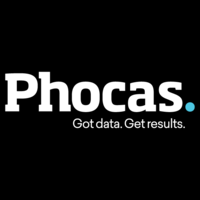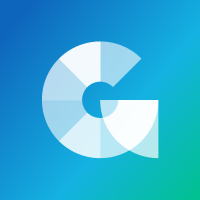Data is everything in the business world. It tells companies where they’re succeeding and what they need to work on. However, having data isn’t enough. You also need the ability to view the data in a way that makes it easy to draw conclusions and form insights into your business.
Data visualization software pulls data from your company and organizes it into graphs and charts, allowing you to quickly see trends and outliers. While all industries need visual representations of their data to make more informed decisions, companies in different industries might need to segment their data differently or be able to share it in different ways. All data visualization tools provide charts and graphics to improve visibility, and many include customizable dashboards to help you compare the data points most important to your organization.
To help you improve the way your business uses its data, we’ve put together a list of the best data visualization tools and software and separated them by industry.
Table of contents
- Choosing the best data visualization tools for your organization
- Best data visualization software overall
- Best data visualization tools for retailers
- Best data visualization software for manufacturers
- Best data visualization tools for healthcare providers
- Best data visualization software for financial institutions
Choosing the best data visualization tools for your organization
Choosing the best data visualization software for your organization can be tricky because different industries all prioritize different things. Healthcare providers need data that can be easily shared between physicians and specialists and help them improve patient experience. Retailers, however, need to be able to target their ideal customers and make sure they’re wisely allocating their marketing budgets.
Before you make your final decision on a data visualization tool, you should make sure it integrates with the other software you use, so you’ll get accurate visibility into your data. You’ll also want to ensure that everyone on your team can use it, unless you’re going to dedicate a single person or team to data analytics. We recommend taking advantage of free trials when available and talking to support before committing to one software.
Best data visualization software overall
These data visualization tools are solid programs that should work well for companies in most industries.
Tableau
Key takeaway: Tableau is a solid choice for organizations with the necessary technical resources to get the most from their data. Teams that already use Salesforce may see extra benefits from the software.
Tableau is a data visualization platform that makes it easier for companies to explore the data they have and gain actionable insights from it. Now owned by Salesforce, Tableau integrates seamlessly with the CRM giant, improving visibility into your sales funnel. The secure analytics platform allows you to easily view and share reports for better collaboration across your business. Available on a browser or as a desktop or mobile app, Tableau lets you consume data wherever you are.
Pros
- User-friendly interface
- Quality and variety of graphics
- Fast and responsive
Cons
- Initial learning curve can be steep
- Not great for businesses without technical resources
Dundas
Key takeaway: Dundas is perfect for mid-size to large enterprises looking to gain the insights they need to improve their products and services.
Dundas is a business intelligence platform that provides customizable reports for medium to large enterprises. Using the platform, you’ll get real-time insights to help you make more informed decisions about your business. Software vendors can also use Dundas to add reporting and analytics capabilities into their programs. It includes open APIs, allowing you to integrate Dundas with the other software you use and improve your overall visibility.
Pros
- Saves time and improves ROI
- Helpful support
- Many capabilities right out of the box
Cons
- UI can be intimidating at first
- No automated reporting feature
Best data visualization tools for retailers
Retailers use their data to better segment their customers and understand what their buyers want. Their data visualization tools need to be able to provide insights on how to best engage with buyers across different segments.
Also read: 5 Ways Retailers Can Best Leverage Data Analytics
Segment
Key takeaway: Segment is great for retailers who want to improve the reach and ROI of their marketing efforts through customer segmentation and insights.
Segment provides retailers with a complete view of their customers’ journeys by compiling data from their website, mobile app, support interactions, and more. The platform can help you nail down your ideal customers and target marketing material to them, improving your sales and revenue. By analyzing user behavior, you can use Segment to find new ways to personalize your promotions and make sure you’re delivering them at the right time.
Pros
- Easy to install additional modules
- Easy to set up and integrate with your website
- User-friendly interface
Cons
- Pricing per number of website visitors per month, which can get expensive
- Requires technical support to map out integrations
Zoho Analytics
Key takeaway: Zoho Analytics is perfect for e-commerce retailers looking to grow their business by tracking key metrics and gathering actionable insights.
Zoho Analytics can be used on its own or as part of the larger Zoho Suite for businesses that want better integrations across their entire business. You can test out different promotions and measure their success to see what’s enticing your buyers the most. Additionally, the dashboard allows you to analyze and monitor your transactions to learn about their source and status and remove bottlenecks from your processes. The insights also help you ensure you always have the right inventory on hand.
Pros
- Customizable dashboards and reports
- Tons of available integrations
- Wide range of functionality
Cons
- Some reports require coding ability to generate
- Might be cost-prohibitive for smaller organizations
Best data visualization software for manufacturers
Manufacturers need to make their processes as efficient as possible to increase revenue and reduce bottlenecks. The right data visualization software can help manufacturing companies improve efficiency.
iDashboards
Key takeaway: iDashboards is a great option for manufacturers looking to remove bottlenecks and improve efficiency in their production processes.
iDashboards helps eliminate inefficiencies in manufacturing organizations by highlighting production trends and showing you where bottlenecks are showing up. The dashboards are easy to build and customize, and you can share them with the key stakeholders in your organization to keep everyone on the same page. You can create custom reports showing productivity results, product quality, downtime metrics, and more. The software doesn’t require any coding experience, so you can create the dashboards you need right out of the box.
Pros
- User-friendly interface with eye-catching graphics for presentations
- Real-time access to data
- Searchable knowledge base
Cons
- Source file limits of 10MB
- No simulation capabilities
Domo
Key takeaway: Domo works well for manufacturing teams who need help optimizing their production line and automating their supply chain to maximize efficiency.
Domo offers analytics, reporting, and management tools to help manufacturers improve product quality and production timelines. You can forecast production needs, check your inventory levels, and track important performance metrics from a single application. The data you’ll get can help you find ways to maximize your use of space and other resources, improve risk management, and prioritize your backlog. Domo works well for supply chain organizations, the automotive industry, and process and discrete manufacturing.
Pros
- Easy to share dashboard access
- Quickly creates visuals
- Improved business visibility
Cons
- Need separate accounts for each user, driving up costs
- Scripting capabilities are sometimes glitchy
Also read: Domo vs. Tableau: Data Visualization Tool Comparison
Best data visualization tools for healthcare providers
Healthcare providers and device manufacturers use their data to ensure they’re providing the best possible service to patients and partners. Their data visualization tools should help them identify gaps in service and improve the overall patient experience.
Also read: Big Data and Healthcare
Sisense
Key takeaway: Sisense is great for healthcare providers who want greater insights from the data they collect as patients move between clinics, specialists, and hospitals.
Sisense offers easily digestible reports to help healthcare organizations improve their customer experience by connecting data across different clinics and facilities. Using the software, you can display and analyze data from medical devices and reduce the time and resources needed to act on that data. Additionally, you can use your data to make more accurate diagnoses and make better decisions for patients based on their histories.
Pros
- Helpful support
- Clean, innovative UI
- Easy to compare current and previous sales periods (i.e., month-over-month or year-over-year)
Cons
- Some minor bugs in the system
- Embedding visuals can be difficult
Phocas
Key takeaway: Phocas is great for medical device suppliers and manufacturers that want to know how healthcare professionals use their products and improve them for doctors and patients alike.
Phocas provides data analytics for manufacturers and suppliers of medical devices to provide better education for the end-user and build stronger relationships with healthcare providers. Using Phocas, your company can see the percentage of sales each of your product categories make up and find new opportunities. Additionally, you can track top customers by different metrics, including region, total sales, or products purchased, to help your sales team know where to focus their efforts.
Pros
- Makes it easy to identify buying gaps
- User-friendly
- Speed to generate reports
Cons
- Setup can be a bit lengthy
- Customizing reports is sometimes difficult
Best data visualization software for financial institutions
Financial institutions use data in a variety of ways, from mapping stock histories to tracking customer interactions. These organizations need data visualization software that’s as far-reaching as their data.
GoodData
Key takeaway: GoodData provides financial institutions with the data they need to calculate risks and make informed decisions for themselves and their clients.
GoodData offers data visualization for both internal tracking and partner-facing solutions to improve decision-making and collaboration. Lenders, bankers, managers, and any part of your organization can use the software to create their own dashboards and charts. You can even put your own branding on the platform and use it during meetings with clients. GoodData also offers excellent security and can help you stay compliant as regulations change.
Pros
- Clear visibility from the dashboard
- Easy to pull and compare many different data points
- Automated reporting capabilities
Cons
- Might be difficult to use without knowledge of SQL
- Initial implementation can be complicated
Salesforce Datorama
Key takeaway: Salesforce Datorama is great for financial institutions who already use Salesforce and want to improve their marketing and client acquisition processes.
Salesforce Datorama is a Salesforce CRM add-on that can help your team improve marketing messages and drive client acquisition across different channels. Using the platform, you can view client onboarding trends and see when you’re most likely to land new customers. It can also help you better target your marketing to attract your ideal clients and ensure you’re allocating your marketing budget appropriately.
Pros
- Responsive and helpful support
- Easy to monitor data from different sources (social media ads, SEM, etc.)
- Customizable and attractive dashboards and reports
Cons
- Can be difficult to troubleshoot errors from API integrations
- Learning curve can be steep


